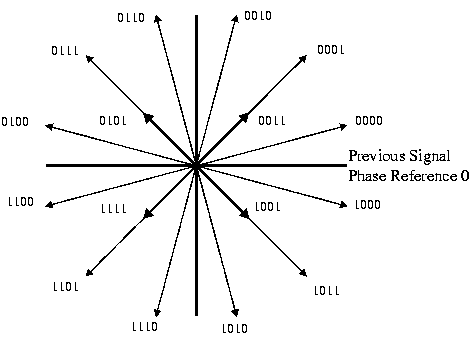| Introduction to Data Communications | ||
|---|---|---|
|
|
28c. QAM - Quadrature Amplitude Modulation | Next |
Phase Modulated and Amplitude Modulated Carrier:

There are two types: 8-QAM and 16-QAM. 8-QAM encodes 3 bits of data (23=8) for every baud and 16-QAM encodes 4 bits of data (24=16) for every baud. Both are used in the V.32 standard for 9600 bps modem (milestone for communications!). 8-QAM transfers 4800 bps and 16-QAM transfers 9600 bps. The baud rate used with QAM is 2400 baud half-duplex.
16-QAM has 12 phase angles, 4 of which have 2 amplitude values! 16-QAM changes phase with every baud change.

16-QAM Phasor Diagram
Higher transfer rates use much more complex QAM methods. For example, V.32bis (14.4 kbps) uses a 64 point constellation to transfer 6 bits per baud. Compare that to the above 16 point constellation!
| Introduction to Data Communications | ||
|---|---|---|
|
|
Table of Contents | Next |